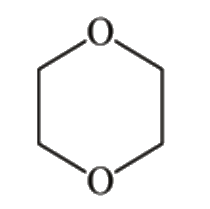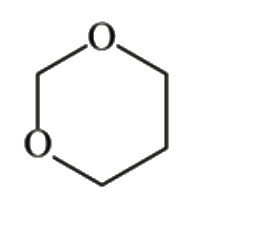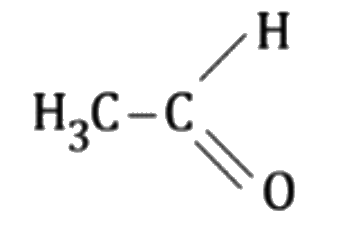Dehydration of ethylene glycol in presence of concentration will give




The correct Answer is:A
To solve the question regarding the dehydration of ethylene glycol in the presence of concentrated H₂SO₄, we can follow these steps:
1. Identify the Structure of Ethylene Glycol:
Ethylene glycol has the formula C₂H₆O₂, which can be represented as HO-CH₂-CH₂-OH. It contains two hydroxyl (–OH) groups.
2. Understanding Dehydration:
Dehydration refers to the removal of water (H₂O) from a compound. In this case, we will remove water from ethylene glycol.
3. Protonation of Hydroxyl Groups:
When concentrated H₂SO₄ is added, it donates protons (H⁺) to the hydroxyl groups of ethylene glycol. This makes the hydroxyl groups more reactive.
4. Formation of a Good Leaving Group:
The protonation of the hydroxyl group converts it into a better leaving group (water). This leads to the formation of a carbocation intermediate.
5. Nucleophilic Attack:
The remaining hydroxyl group (–OH) can act as a nucleophile and attack the electrophilic carbon of the carbocation, leading to the elimination of a water molecule (H₂O).
6. Formation of Ether:
The product formed after the elimination of water is an ether. The structure of the ether formed from ethylene glycol is diethyl ether, which can be represented as CH₂=CH-O-CH₂-CH₂.
7. Final Product:
The final product of the dehydration of ethylene glycol in the presence of concentrated H₂SO₄ is ethylene oxide (or oxirane), which is a cyclic ether.
Conclusion:
The dehydration of ethylene glycol in the presence of concentrated H₂SO₄ yields ethylene oxide (C₂H₄O).
Ethylene glycol has the formula C₂H₆O₂, which can be represented as HO-CH₂-CH₂-OH. It contains two hydroxyl (–OH) groups.
Dehydration refers to the removal of water (H₂O) from a compound. In this case, we will remove water from ethylene glycol.
When concentrated H₂SO₄ is added, it donates protons (H⁺) to the hydroxyl groups of ethylene glycol. This makes the hydroxyl groups more reactive.
The protonation of the hydroxyl group converts it into a better leaving group (water). This leads to the formation of a carbocation intermediate.
The remaining hydroxyl group (–OH) can act as a nucleophile and attack the electrophilic carbon of the carbocation, leading to the elimination of a water molecule (H₂O).
The product formed after the elimination of water is an ether. The structure of the ether formed from ethylene glycol is diethyl ether, which can be represented as CH₂=CH-O-CH₂-CH₂.
The final product of the dehydration of ethylene glycol in the presence of concentrated H₂SO₄ is ethylene oxide (or oxirane), which is a cyclic ether.
The dehydration of ethylene glycol in the presence of concentrated H₂SO₄ yields ethylene oxide (C₂H₄O).
Topper's Solved these Questions
Similar Questions
Knowledge Check
Dehydration of alcohol into alkene by concentration H2SO4 involves which among the following reaction intermediate ?
AFree radicalBCarbocationCCarbanionDCarbeneA fatty acid reacts with an alcohol in the presence of concentrated H2SO4 to give
AEtherBEstersCAlkeneDAlkanePhthalic acid reacts with resorcinol in the presence of concentrated H2SO4 to give:
APhenolphthaleinBAlizarinCCoumarinDFluorescein
Reaction of Br2 on ethylene in presence of NaCl gives
View SolutionAddition of methanol to 2 - methylpropene in the presence of conc. H2SO4 gives
View SolutionThe dehydration of alcohols in the presence of conc. H2SO4 at 170∘C involves one of the following :
View SolutionThe main compound obtained when chlorobenzene is heated with chloral in presence of concentrated H2SO4 is
View SolutionThe reaction of ethylene glycol with PI3 gives :
View Solution